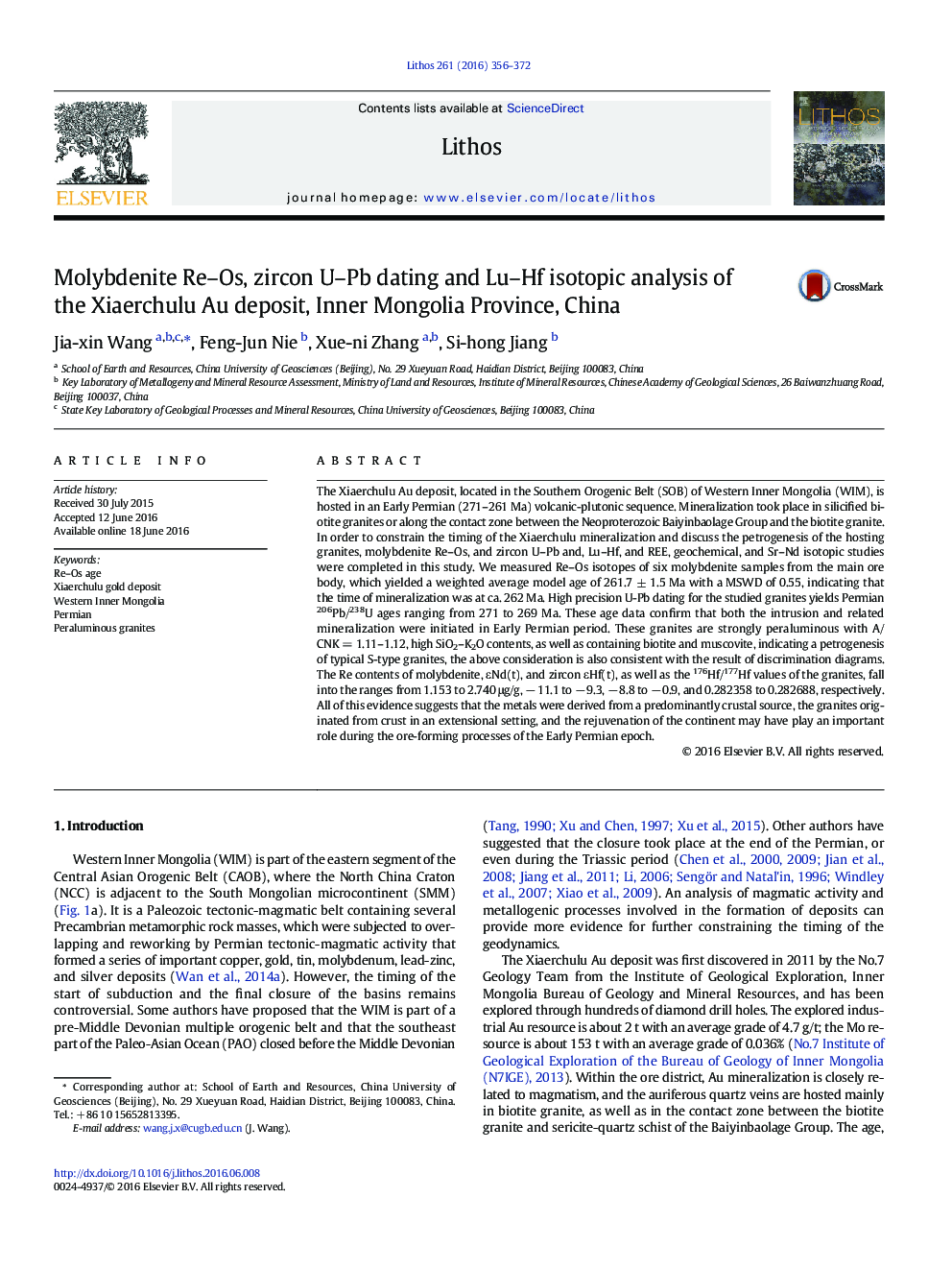| کد مقاله | کد نشریه | سال انتشار | مقاله انگلیسی | نسخه تمام متن |
|---|---|---|---|---|
| 4715565 | 1638643 | 2016 | 17 صفحه PDF | دانلود رایگان |

• We confirm that the mineralization in the Xiaerchulu Au deposit occurred during 261–271 Ma.
• We imply that the metals of the Xiaerchulu Au deposit were derived from a predominantly crustal source.
• The new data of geochronology and geochemistry indicate that the PAO closed at least before the Early Permian.
The Xiaerchulu Au deposit, located in the Southern Orogenic Belt (SOB) of Western Inner Mongolia (WIM), is hosted in an Early Permian (271–261 Ma) volcanic-plutonic sequence. Mineralization took place in silicified biotite granites or along the contact zone between the Neoproterozoic Baiyinbaolage Group and the biotite granite. In order to constrain the timing of the Xiaerchulu mineralization and discuss the petrogenesis of the hosting granites, molybdenite Re–Os, and zircon U–Pb and, Lu–Hf, and REE, geochemical, and Sr–Nd isotopic studies were completed in this study. We measured Re–Os isotopes of six molybdenite samples from the main ore body, which yielded a weighted average model age of 261.7 ± 1.5 Ma with a MSWD of 0.55, indicating that the time of mineralization was at ca. 262 Ma. High precision U-Pb dating for the studied granites yields Permian 206Pb/238U ages ranging from 271 to 269 Ma. These age data confirm that both the intrusion and related mineralization were initiated in Early Permian period. These granites are strongly peraluminous with A/CNK = 1.11–1.12, high SiO2–K2O contents, as well as containing biotite and muscovite, indicating a petrogenesis of typical S-type granites, the above consideration is also consistent with the result of discrimination diagrams. The Re contents of molybdenite, εNd(t), and zircon εHf(t), as well as the 176Hf/177Hf values of the granites, fall into the ranges from 1.153 to 2.740 μg/g, − 11.1 to − 9.3, − 8.8 to − 0.9, and 0.282358 to 0.282688, respectively. All of this evidence suggests that the metals were derived from a predominantly crustal source, the granites originated from crust in an extensional setting, and the rejuvenation of the continent may have play an important role during the ore-forming processes of the Early Permian epoch.
Journal: Lithos - Volume 261, 15 September 2016, Pages 356–372